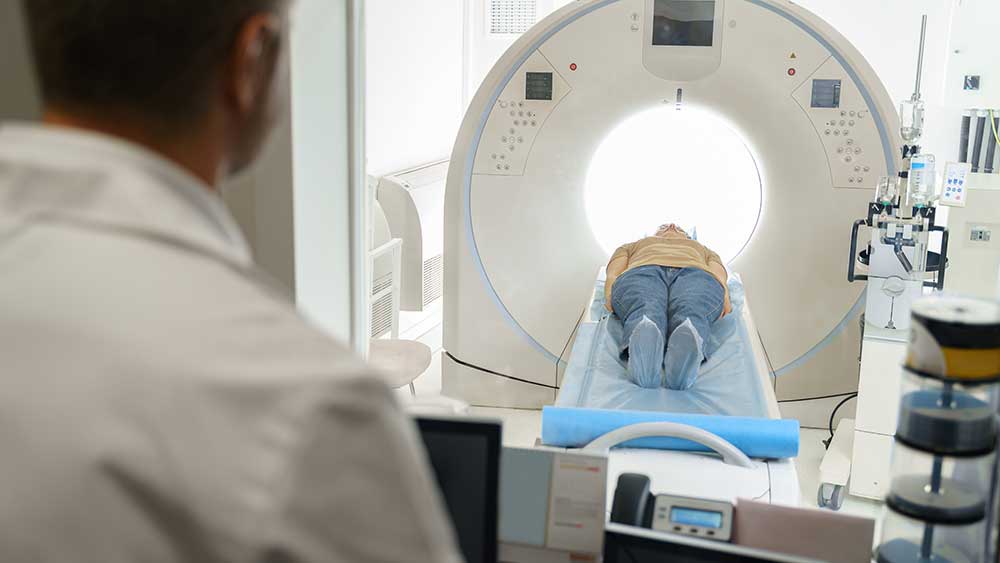
Feb 14, 2025
Blog Life Sciences The Medical Imaging Market: A Glimpse into the Future of Healthcare
Medical imaging technology is one of the most transformative innovations in modern healthcare. From the early days of X-rays to the more advanced tools like MRI, CT scans, and PET scans, the ability to visualize the internal structures of the body has revolutionized diagnosis, treatment planning, and patient care. The medical imaging market, as a result, has seen tremendous growth, driven by advancements in technology, increasing demand for diagnostic procedures, and the rising prevalence of chronic diseases.
In this blog, we’ll take a closer look at the current landscape of the medical imaging market, key drivers, trends, challenges, and future growth opportunities.
The global medical imaging market is rapidly expanding and is projected to continue growing in the coming years. According to various market research reports, the global medical imaging market was valued at over $40 billion in 2020 and is expected to reach upwards of $60 billion by 2030, growing at a compound annual growth rate (CAGR) of around 5-7% during this period.
This market encompasses a wide range of imaging technologies, including:
The global market for medical imaging is expected to grow from $63.4 billion in 2024 and is projected to reach $82.6 billion by the end of 2029, at a compound annual growth rate (CAGR) of 5.5% during the forecast period of 2024 to 2029.
Integration of AI and Machine Learning
One of the most exciting trends in medical imaging is the integration of AI and ML. These technologies are being used to automate image analysis, reduce human error, and speed up diagnosis. AI algorithms can analyze vast amounts of medical imaging data to detect abnormalities, such as tumors or fractures, with high accuracy. This can improve the quality of care while reducing the workload of radiologists.
Portable and Point-of-Care Imaging
The demand for portable and point-of-care imaging devices is on the rise. Ultrasound, for example, has become more portable and user-friendly, enabling quicker diagnoses in various settings like emergency rooms, clinics, and even at home. This trend is driven by the need for faster and more accessible diagnostic tools, particularly in rural or underdeveloped regions.
3D Imaging and Advanced Visualization Techniques
3D imaging technologies, including 3D mammography and CT angiography, are enabling more detailed, accurate images for diagnosis and surgical planning. Surgeons can now use 3D imaging to better understand the anatomy of patients, leading to improved surgical outcomes and reduced risks.
Cloud-Based Imaging
Cloud computing is transforming how medical images are stored, analyzed, and shared. Cloud-based imaging solutions enable healthcare professionals to access medical images remotely, collaborate on cases, and store large volumes of data securely. This trend also offers cost-saving benefits for healthcare providers who do not have to invest in expensive on-premise infrastructure.
High Cost of Equipment and Maintenance
One of the biggest challenges in the medical imaging market is the high cost of advanced imaging equipment and its maintenance. Not all healthcare facilities, especially in low-income regions, can afford the latest imaging technologies, creating disparities in access to high-quality care.
Regulatory and Safety Concerns
Medical imaging devices are subject to strict regulatory requirements to ensure patient safety. Issues related to radiation exposure (in the case of X-rays and CT scans) and the need for periodic calibration and maintenance pose challenges to the industry. Manufacturers must continuously innovate to ensure their devices meet the latest regulatory standards.
Data Privacy and Security
With the rise of cloud-based imaging and the digitalization of healthcare, patient data security has become a major concern. Healthcare providers need to implement robust cybersecurity measures to safeguard patient information from data breaches and cyberattacks.
The future of the medical imaging market looks promising, with several growth opportunities on the horizon. Advances in AI, quantum computing, and augmented reality (AR) could further enhance imaging technologies, improving diagnosis accuracy and operational efficiency. Additionally, the increasing shift toward personalized medicine will drive demand for imaging techniques that can provide highly detailed, patient-specific data.
Moreover, as access to healthcare improves globally, the demand for affordable and portable imaging solutions will create new avenues for growth, particularly in emerging markets. Manufacturers are also focusing on developing cost-effective solutions for small and medium-sized healthcare facilities to address the gap in access to high-quality imaging.
The medical imaging market is evolving rapidly, driven by technological advancements and increasing global healthcare demands. As the healthcare industry continues to prioritize early diagnosis, precision medicine, and patient care, the role of medical imaging will become even more critical. The combination of AI, cloud technologies, and portable devices holds great promise in shaping the future of medical imaging and improving patient outcomes worldwide.
In summary, the medical imaging market presents both challenges and opportunities, but with continued innovation and investment, it will undoubtedly remain a cornerstone of modern healthcare.

I am Adarsh Rawat and I have a degree in BBA from Jamia Milia Islamia, I have honed a diverse skill set that spans digital marketing, traditional advertising, brand management, and market research. My journey in marketing has been characterized by a commitment to innovation and an ability to adapt to emerging trends.
In today’s fast-paced biomedical world, researchers and pharmaceutical companies...

Radiopharmaceuticals represent a cutting-edge frontier in modern medicine, offer...

Implantable Remote Patient Monitoring (IRPM) devices are revolutionizing healthc...

We are your trusted research partner, providing actionable insights and custom consulting across life sciences, advanced materials, and technology. Allow BCC Research to nurture your smartest business decisions today, tomorrow, and beyond.
Contact UsBCC Research provides objective, unbiased measurement and assessment of market opportunities with detailed market research reports. Our experienced industry analysts assess growth opportunities, market sizing, technologies, applications, supply chains and companies with the singular goal of helping you make informed business decisions, free of noise and hype.